Juneau, Alaska’s remote state capital, sits at the base of Mount Juneau and across the channel from Douglas Island. The city’s downtown hugs the waterfront, with colourful rows of shops and restaurants. Beyond, trails and attractions make the most of Juneau’s mountain scenery and natural features.
| Attraction | Description |
|---|---|
| Mendenhall Glacier | Juneau’s prime natural attraction, offering stunning glacier views and adventure trails. |
| Mount Roberts Tramway | A tram ride providing panoramic views and access to hiking trails at Mt. Roberts. |
| Alaska State Museum | Showcases Alaska’s history and cultures with various exhibits. |
| Juneau Douglas City Museum | Focuses on the local history of Juneau and Douglas with exhibits and artifacts. |
| St Nicholas Russian Orthodox Church | Historic church featuring Russian architectural styles and sacred artifacts. |
| Whale Watching | Offers tours to observe humpback and orca whales in their natural habitat. |
| Governor’s Mansion | Historical mansion offering tours to showcase its architecture and history. |
| Glacier Gardens Rainforest Adventure | A botanical garden adventure in a lush rainforest setting. |
| Last Chance Mining Museum | Explores Juneau’s mining history with tours inside a former mine. |
| Shrine of St Therese | A peaceful shrine with stunning architecture and ocean views. |
| Alaska State Capitol | The meeting place of Alaska’s legislature, with tours available. |
| Macaulay Salmon Hatchery | Offers a look at salmon life cycles and the annual salmon run. |
Mendenhall Glacier, a popular day trip, has beautiful, icy caves to explore. The historic downtown area offers gold rush-era charm. Whale-watching cruises provide views of massive humpbacks and orcas swimming offshore. Flightseeing trips and helicopter tours provide a bird’s-eye view of the region’s glaciers, forests and waterways.
With its dramatic glaciers, towering mountains and abundant wildlife, Juneau truly exemplifies the majestic beauty of Alaska.
Mendenhall Glacier
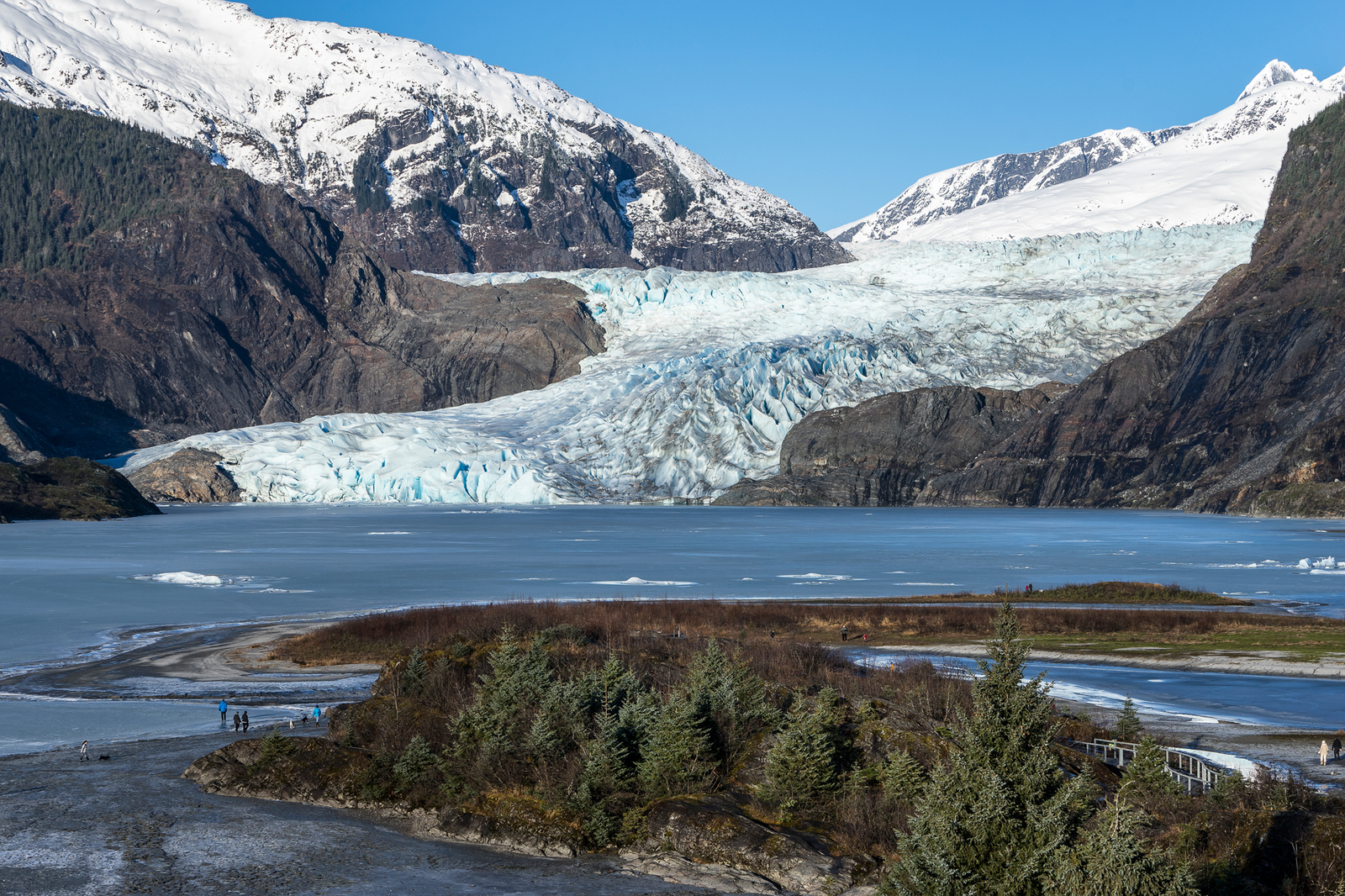
Name and Location: Mendenhall Glacier is located in the Mendenhall Valley, about 12 miles from downtown Juneau, Alaska. It is part of the Tongass National Forest and is one of the most popular tourist attractions in the state.
History and Significance: The glacier was originally named Sitaantaagu (“the Glacier Behind the Town”) or Aak’wtaaksit (“the Glacier Behind the Little Lake”) by the Tlingit people. In 1892, it was renamed in honor of Thomas Corwin Mendenhall, a prominent American scientist. The glacier has been retreating since the end of the Little Ice Age in the 1700s, and its retreat has accelerated in recent decades due to climate change.
What to Expect: Visitors can enjoy stunning views of the glacier from the Mendenhall Glacier Visitor Center, which offers exhibits, films, and ranger-led programs. Hiking trails in the area provide opportunities to see the glacier up close, as well as the chance to spot wildlife such as bears, mountain goats, and bald eagles. In the summer, visitors can also take a guided kayak or canoe tour to explore the glacier and its surroundings.
Visitor Information: The Mendenhall Glacier Visitor Center is open daily from May through September, with reduced hours in the shoulder seasons. Admission to the center is $5 for adults, with reduced rates for children, seniors, and those with a federal recreation pass. The center is accessible by car, with plenty of parking available, or via a shuttle bus from downtown Juneau. Visitors should dress in layers and wear sturdy shoes suitable for hiking on uneven terrain.
The Mendenhall Glacier is Juneau’s foremost natural attraction and one of Alaska’s most spectacular sights. This frigid but beautiful glacier originates at the Juneau Ice field nearly 1,500 square miles in size, and extends a full 12 miles to its face at Mendenhall Lake.
Visitors can admire the shimmering blue glacial ice from the visitor center or get right up to the glacier along the easy Photo Point trail along the shore of Mendenhall Lake. Those willing to tackle a little rougher terrain can hike out along the East Glacier trail for a truly unforgettable experience walking above glittering ice crevasses and circular glacial lakes.
The ice caves at the face of the glacier can also be explored with a professional guide. Regardless of how close you get, the giant icy face of the glacier is bound to thrill.
Mount Roberts Tramway
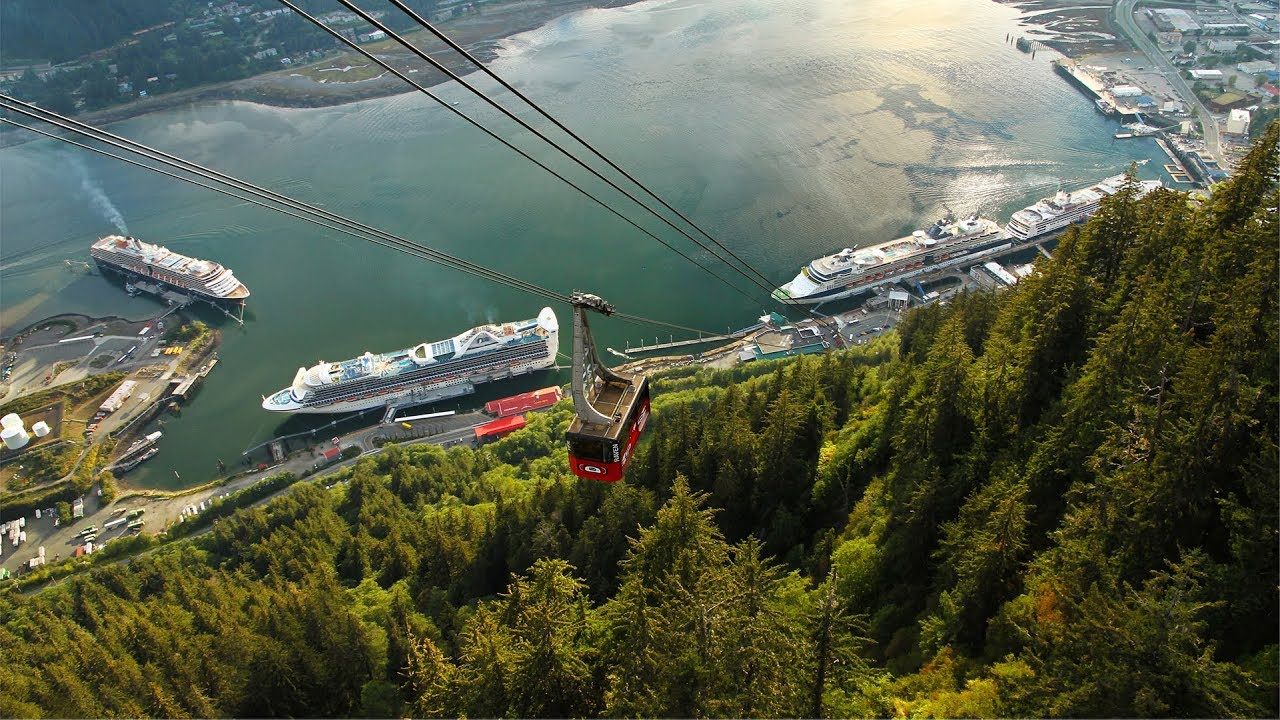
Name and Location: The Mount Roberts Tramway is an aerial tramway located just south of downtown Juneau, Alaska. It takes visitors from the cruise ship dock to the Mountain House, 1,800 feet up Mount Roberts.
History and Significance: The tramway was built in 1996 and is operated by Goldbelt, Inc., an Alaska Native corporation. It provides visitors with easy access to the alpine environment of Mount Roberts and offers panoramic views of Juneau, the Gastineau Channel, and the surrounding mountains.
What to Expect: The tramway ride takes about six minutes and offers stunning views of the area. At the top, visitors can explore hiking trails, enjoy native crafts at the Raven Eagle Gifts & Gallery, watch an 18-minute film about the history and culture of the Tlingit people, and dine at the Timberline Bar & Grill. The Mountain House also features a bald eagle display, where visitors can see these majestic birds up close.
Visitor Information: The Mount Roberts Tramway operates from early May to late September, with hours varying depending on the cruise ship schedule. Tickets can be purchased at the tramway station or as part of a cruise ship shore excursion package. The tram is wheelchair accessible, and the Mountain House and trails are ADA compliant. Visitors should dress in layers, as the weather can change quickly at elevation.
The Mount Roberts Tramway whisks visitors 1,800 feet up from bustling downtown Juneau to the peak of Mt. Roberts in just six minutes. Panoramic vistas unfold on the ride up revealing scenic islands, channels, waterfalls and lush rainforest.
At the top, miles of hiking trails lead to even more staggering lookout points with views across snow-clad mountain peaks and down steep cliffs to the city and channel waters far below. A restaurant, theater, gift shops and a nature center with exhibits on Tlingit native culture and bald eagles round out the attractions at the top. Or you can simply soak in the alpine scenery with a drink on the viewing deck.
Alaska State Museum
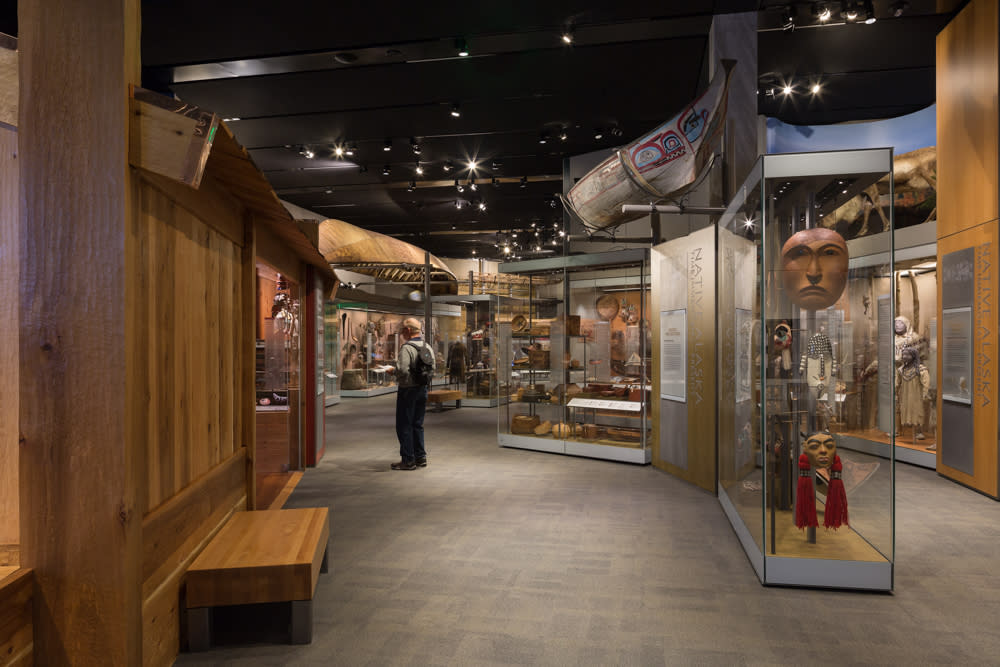
Name and Location: The Alaska State Museum, also known as the Andrew P. Kashevaroff Building, is located in the heart of downtown Juneau, Alaska, at 395 Whittier Street.
History and Significance: The museum was established in 1900 and moved to its current location in 2016. It is named after Andrew P. Kashevaroff, a Russian Orthodox priest and scholar who served as the museum’s first curator. The museum’s collections showcase the natural, cultural, and artistic heritage of Alaska, with a focus on the state’s Native peoples.
What to Expect: The museum features a variety of permanent and temporary exhibits, including displays on Alaska’s natural history, the art and culture of Alaska’s Native peoples, the Russian colonial period, and the state’s modern history. Highlights include a full-scale replica of an early 20th-century fishing boat, a collection of Alaska Native artifacts and artwork, and a hands-on discovery room for children. The museum also hosts lectures, workshops, and other special events throughout the year.
Visitor Information: The Alaska State Museum is open year-round, with hours varying by season. Admission is $12 for adults, with reduced rates for children, seniors, and military personnel. Guided tours are available for an additional fee, and the museum store offers a selection of books, jewelry, and other Alaska-themed gifts. The museum is fully accessible, with elevators and wheelchair-friendly exhibits.
Alaska’s rich culture and history comes alive at this impressive museum housed in the historic Juneau Federal Building. Themed galleries and exhibits feature artifacts, photos and multimedia celebrating Alaska’s diverse indigenous people, early European exploration and colonialism, the gold rush era, and modern history since statehood in 1959.
Highlights include ceremonial masks and totem poles from different native cultures, models of traditional pit houses and fishing boats, historic prints and paintings depicting early European arrivals and the chaos of the Juneau gold fields.
Visitors can also watch twentieth-century events unfold in archival footage and imagine wilderness travel in the early 1900s in a replica cabin. Don’t miss the seventh-floor observation deck for great views across downtown Juneau and Gastineau Channel.
Juneau Douglas City Museum
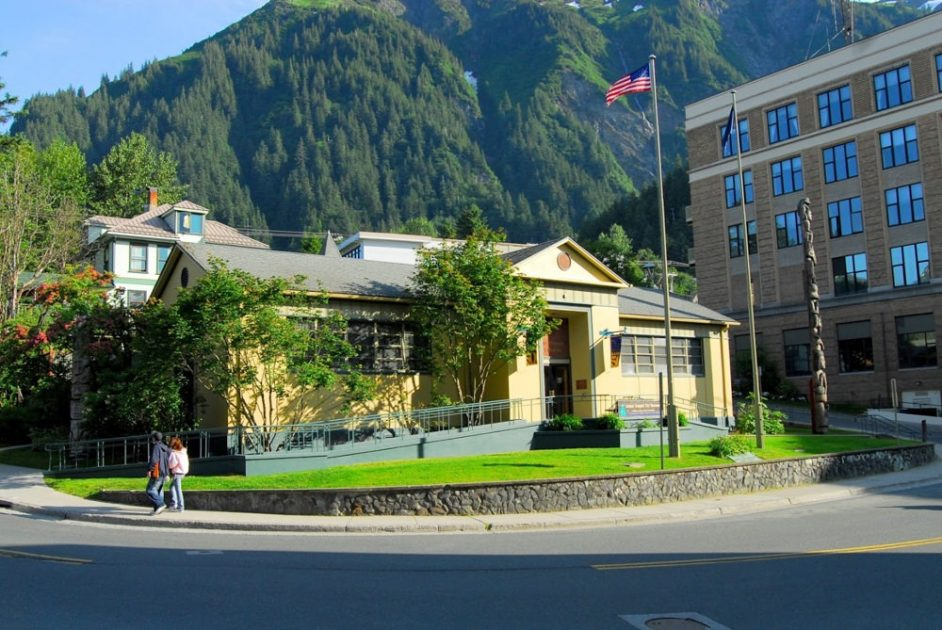
Name and Location: The Juneau-Douglas City Museum is located at 114 West 4th Street in downtown Juneau, Alaska, in the historic Veterans Memorial Building.
History and Significance: The museum was established in 1976 to preserve and interpret the cultural heritage of the Juneau-Douglas area. It is housed in a building that was originally constructed in 1951 as a memorial to veterans of World War II and the Korean War. The museum’s collections focus on the history of Juneau and Douglas, from the ancestral homeland of the Áak’w Ḵwáan Tlingit people to the modern era.
What to Expect: The museum features a variety of exhibits on the natural history, cultural heritage, and industrial development of the Juneau-Douglas area. Highlights include a replica of a historic mine railway car, a collection of Tlingit artifacts and artwork, and photographs and memorabilia from Juneau’s early days as a mining town. The museum also hosts temporary exhibits, lectures, and other special events throughout the year.
Visitor Information: The Juneau-Douglas City Museum is open year-round, with hours varying by season. Admission is $6 for adults, with reduced rates for children, seniors, and military personnel. The museum is wheelchair accessible and offers guided tours for a small additional fee. The museum store sells a variety of books, postcards, and other souvenirs related to Juneau’s history and culture.
Just across Gastineau Channel in Douglas on Douglas Island sits this charming local museum housed in the historic St Ann’s schoolhouse constructed in 1913. Artifacts, photos, archival records, news clippings and exhibits tell the story of twin harbor communities Juneau and Douglas from the Tlingit natives who lived here to the gold prospectors who founded these towns to present-day fishing and mining industries.
Browse historic photos chronicling saloons and storefronts during the rollicking gold rush era or find out more about early Douglas Island gold mines. There’s even a replica of the Treadwell Mine and model trains winding through a miniature replica of Douglas. It’s an engaging look into local history.
St Nicholas Russian Orthodox Church
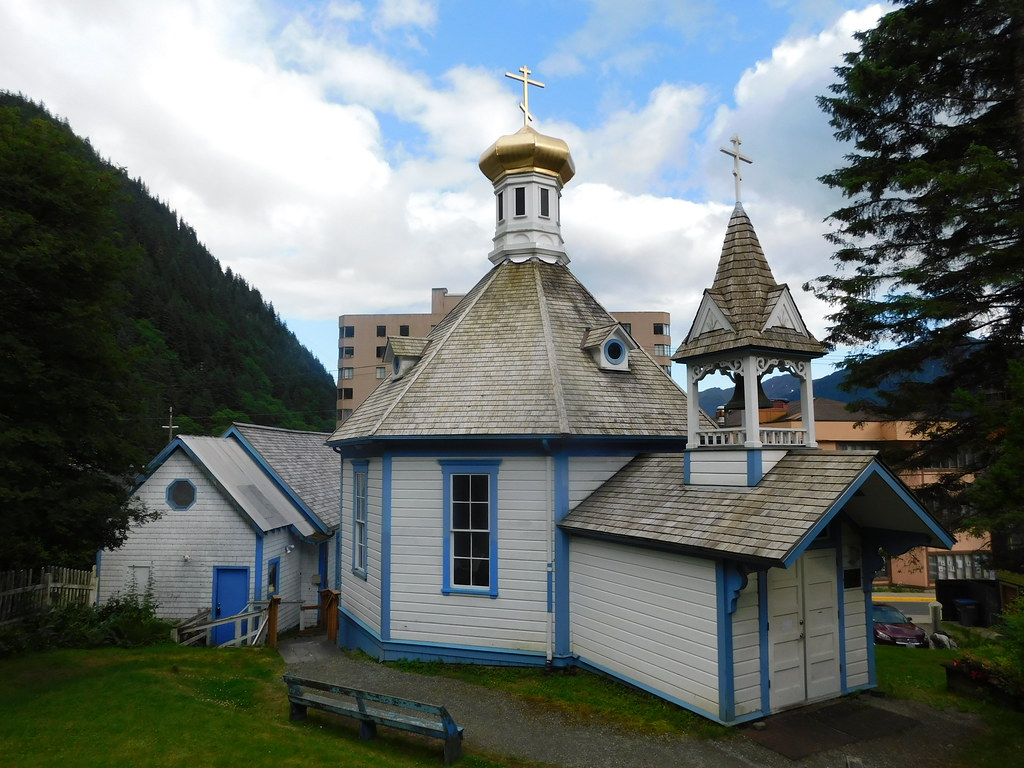
Name and Location: The St. Nicholas Russian Orthodox Church is located at 326 5th Street in downtown Juneau, Alaska. It is situated on a hill overlooking the city and the Gastineau Channel.
History and Significance: The church was built in 1893-94 by Serbian gold miners and is the oldest continuously operating Russian Orthodox church in southeastern Alaska. It was named after St. Nicholas, the patron saint of sailors and travelers. The church is known for its distinctive blue onion dome and Orthodox crosses, as well as its icon screen (iconostasis) featuring religious paintings.
What to Expect: Visitors to the church can admire its traditional Russian Orthodox architecture and artwork, including the wooden structure, onion dome, and interior icon screen. The church is still an active place of worship, with services held regularly. Visitors are welcome to attend services or explore the church during open hours, provided they are respectful of worshippers and church customs.
Visitor Information: The St. Nicholas Russian Orthodox Church is open to visitors during limited hours in the summer months, typically from early June to late August. Admission is free, but donations are welcomed to help with the upkeep of the historic building. The church is a short walk from downtown Juneau and can be reached on foot or by car. Visitors should note that the church is a place of worship and dress modestly when entering.
Juneau has several notable historic churches but none are as striking as the blue onion domes peeking out of the trees atop a hillside overlooking downtown. Built by Tlingit carpenters between 1893 and 1896, the church perfectly captures the Russian Orthodox aesthetics of domes, decorative crosses and icons.
Gaze up at the beautiful blue and gold dome topped by an onion-shaped cupola as you enter the church to view precious Russian icons, chalices, vestments and paintings adorning the altar and sanctuary framed by hand-carved woodwork. Intricate choral music drifts from the loft adding to the aura as soft daylight filters through the windows.
Whale Watching
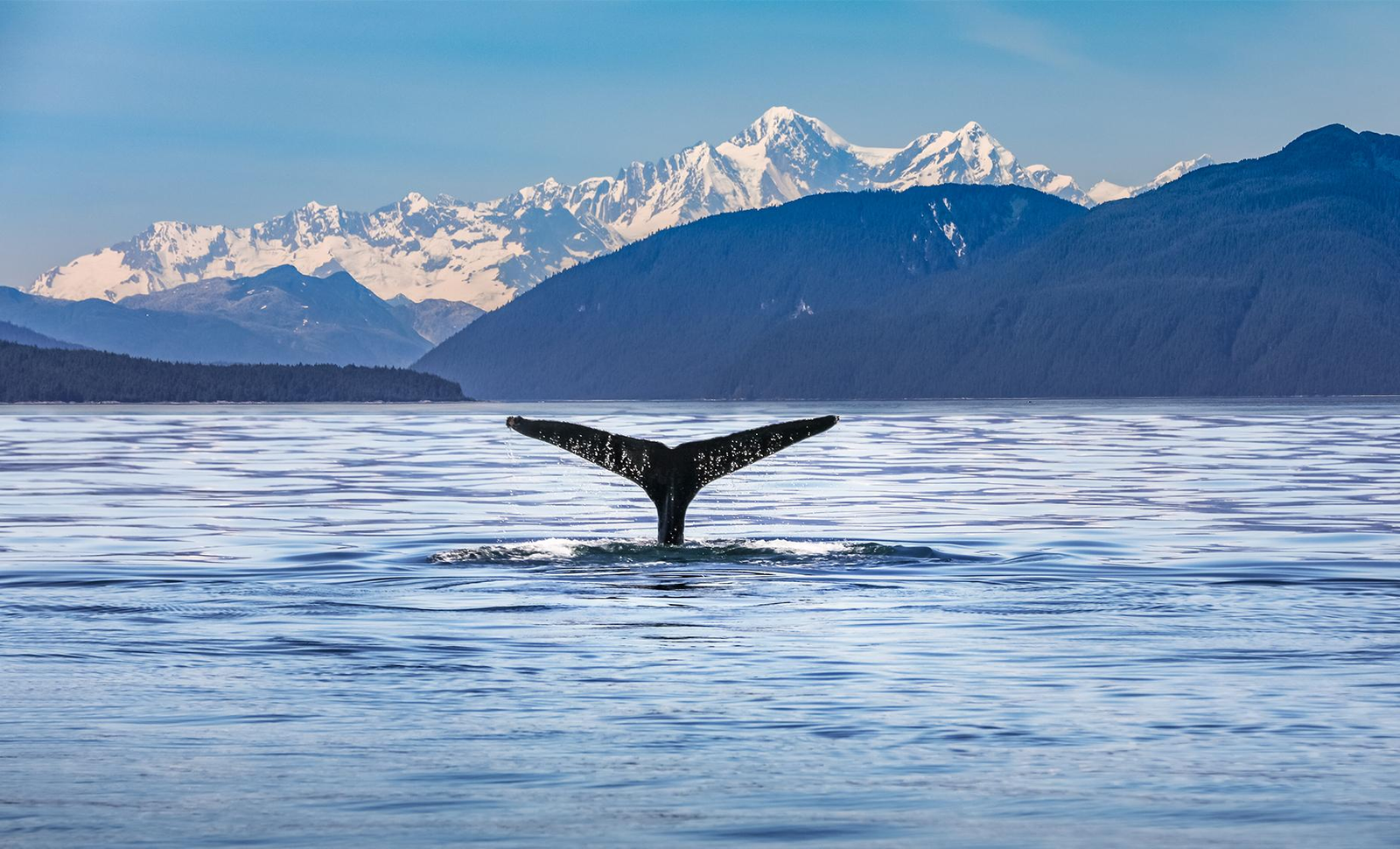
Name and Location: Whale watching tours depart from several locations in Juneau, Alaska, including the Auke Bay Harbor, located about 12 miles north of downtown Juneau.
History and Significance: The waters around Juneau are home to a variety of whale species, including humpback whales, orcas (killer whales), and occasionally gray whales and minke whales. Whale watching tours have been operating in Juneau since the 1970s and have become a popular attraction for visitors to the area.
What to Expect: Whale watching tours typically last 2-4 hours and take place on boats ranging from small vessels to larger catamarans. Visitors can expect to see humpback whales, which are known for their acrobatic displays and distinctive songs. Orcas and other marine wildlife, such as seals, sea lions, and bald eagles, may also be spotted. Many tours feature knowledgeable guides who provide information about the whales and their behavior.
Visitor Information: Whale watching tours operate from May through September, with peak season in July and August. Prices vary depending on the tour operator and the length of the tour, but typically range from $100 to $200 per person. Visitors should dress in warm, layered clothing and bring rain gear, as weather conditions can change quickly on the water. Most tour operators provide binoculars and hot drinks on board. Advance reservations are recommended, especially during peak season.
Seeing whales surface, breach and slap the water with their massive tails is for many the highlight of a trip to Juneau. Several companies offer whale watching tours departing from downtown Juneau May through September when humpback and orca whales pass through feeding on late summer bait fish.
Cruise past burgeoning bull kelp forests, watch eagles and sea lions along shore then scan the seas for sudden plumes of mist erupting as the leviathans surface to spout. Zodiac tours get you even closer to see the whales’ knobby heads, giant tails and slender flukes on intimate small boat tours. Peak season is July and August but sightings occur May-September.
Governor’s Mansion
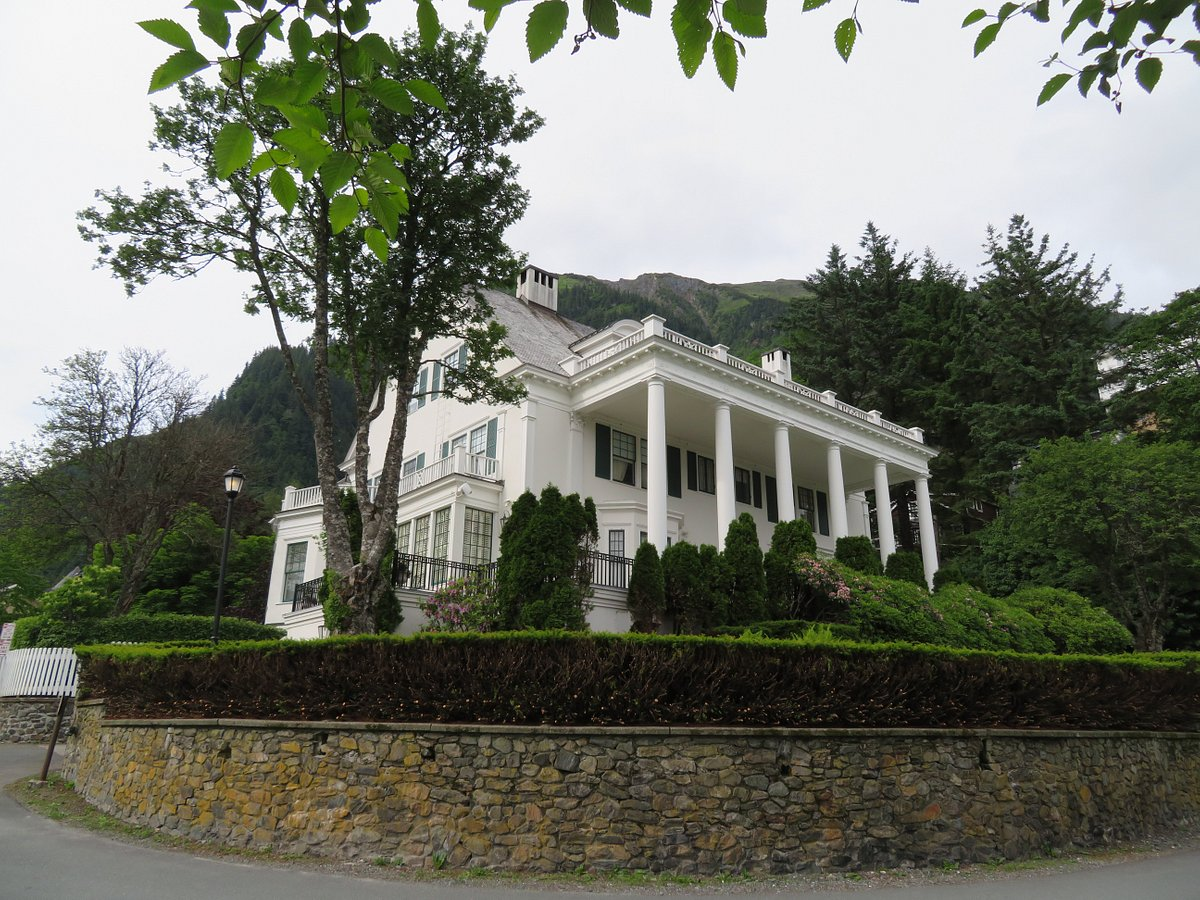
Name and Location: The Governor’s Mansion is located at 716 Calhoun Avenue in the heart of downtown Juneau, Alaska. It sits on a hill overlooking the city and the Gastineau Channel.
History and Significance: The mansion was built in 1912 and has served as the official residence of Alaska’s governors since Alaska achieved statehood in 1959. The building is a designated National Historic Landmark and is known for its distinctive Colonial Revival architecture, featuring a white exterior, columns, and a circular drive.
What to Expect: Visitors to the Governor’s Mansion can take a guided tour of the public rooms on the first floor, which are furnished with a mix of historic and contemporary artwork and furniture. The tour includes the dining room, ballroom, library, and a display of portraits of Alaska’s governors. The second floor, which contains the private living quarters of the governor’s family, is not open to the public.
Visitor Information: Free guided tours of the Governor’s Mansion are offered during the summer months, typically from late May to early September. Tours last approximately 30 minutes and are available on a first-come, first-served basis. Visitors should check the mansion’s website or call ahead for current tour hours and availability. The mansion is wheelchair accessible on the first floor, and photography is permitted in some areas. Visitors should note that the mansion is a working residence and may be closed to tours during official events.
Built in 1912, this stately three-story mansion has been the official residence of Alaska’s governors since 1960. Free guided tours introduce visitors to this historic home’s period architecture including classic columns, grand stairway, crystal chandeliers and ornate crown moldings as guides share stories about former governors and their families.
Notable furnishings include an 1880s grand piano, a porcelain vase gifted from China and a 1890s Tiffany lamp. Visitors are also welcome to explore the surrounding gardens resplendent with lupine, fireweed, hanging fuchsia baskets and more against a backdrop of towering spruce trees. Reservations are recommended for tours.
Glacier Gardens Rainforest Adventure
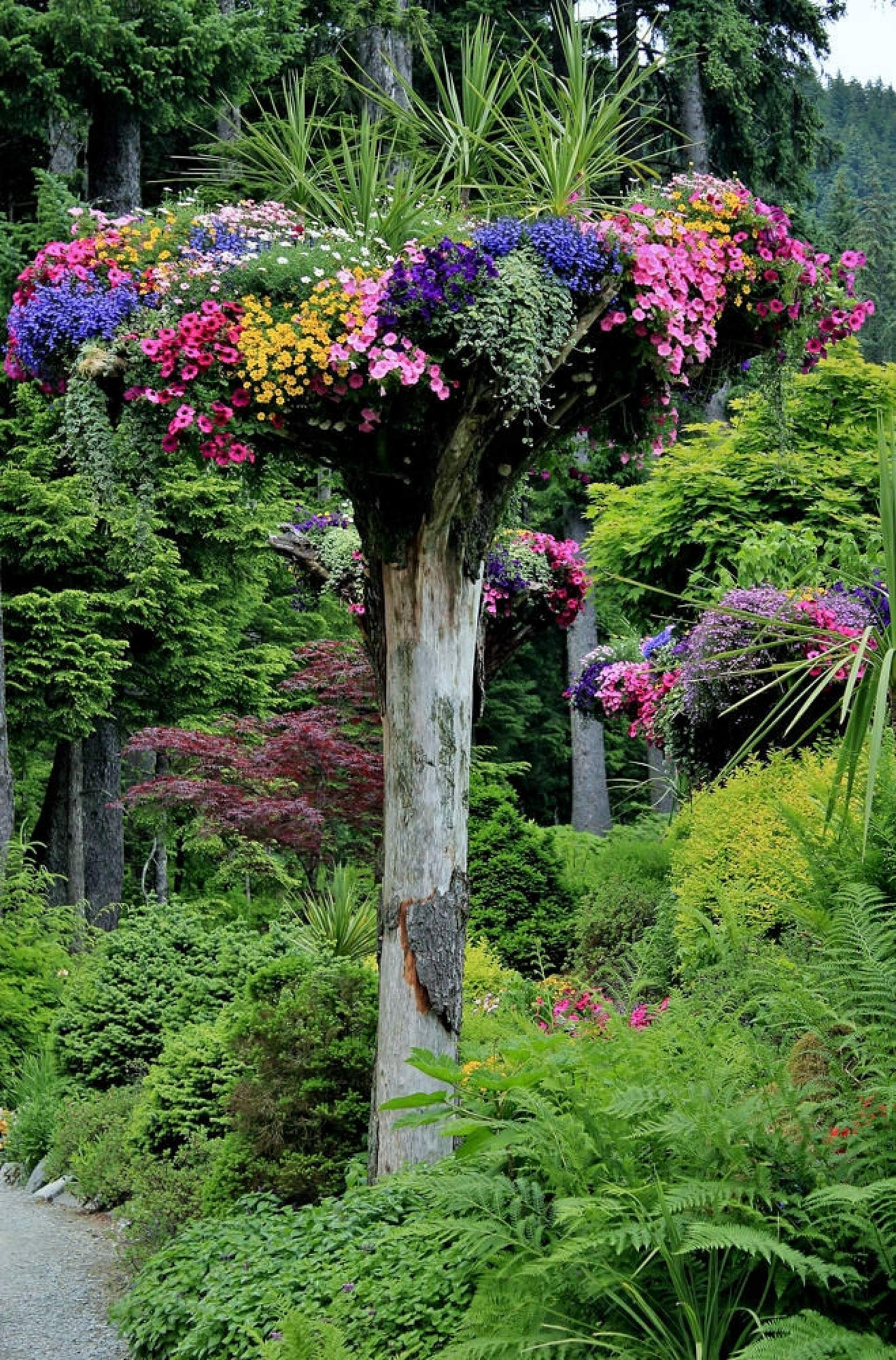
Name and Location: Glacier Gardens Rainforest Adventure is located at 7600 Glacier Highway, about 8 miles from downtown Juneau, Alaska. The attraction is set on a 50-acre rainforest preserve in the Tongass National Forest.
History and Significance: Glacier Gardens was founded in 1994 by Steve and Cindy Bowhay, who aimed to create a unique attraction showcasing the beauty of Alaska’s rainforests. The gardens feature a novel approach to gardening, with flowers and plants growing on the upturned roots of fallen trees, creating a stunning and surreal landscape.
What to Expect: Visitors to Glacier Gardens can take a guided tour through the rainforest on covered carts, learning about the local flora and fauna from knowledgeable guides. The tour includes stops at stunning viewpoints overlooking the Mendenhall Valley and Glacier, as well as a walk through the unique Upside-Down Flower Towers. The attraction also features a gift shop, a botanical garden, and a visitor center with exhibits on the history and ecology of the area.
Visitor Information: Glacier Gardens is open from May through September, with tours departing regularly throughout the day. Admission prices include the guided tour and access to the visitor center and gardens. The attraction is partially wheelchair accessible, with a wheelchair lift available for the tour carts. Visitors should dress in layers and wear comfortable walking shoes, as the tour involves some walking on uneven terrain. The gift shop offers a variety of Alaska-themed souvenirs, including locally made jewelry and art.
Adventure into the lush rainforest blanketing the peak of Thunder Mountain just five mile outside downtown Juneau at this family attraction. Meandering along elevated walkways, the botanical garden trail passes waterfalls, ponds, a swing set cobbled together from mining artifacts amid moss draped branches and giant ferns thriving in the muskeg.
See Alaska’s official state flower, the hardy fireweed, spread bright fuschia blossoms across the valley each July and August. For even grander vistas, the Mountainside Zipline Adventure tour includes a chairlift ride up Thunder Mountain, three tandem ziplines and three suspension bridges traversing lush ravines 1000’ above the forest floor at exhilarating speeds.
Last Chance Mining Museum
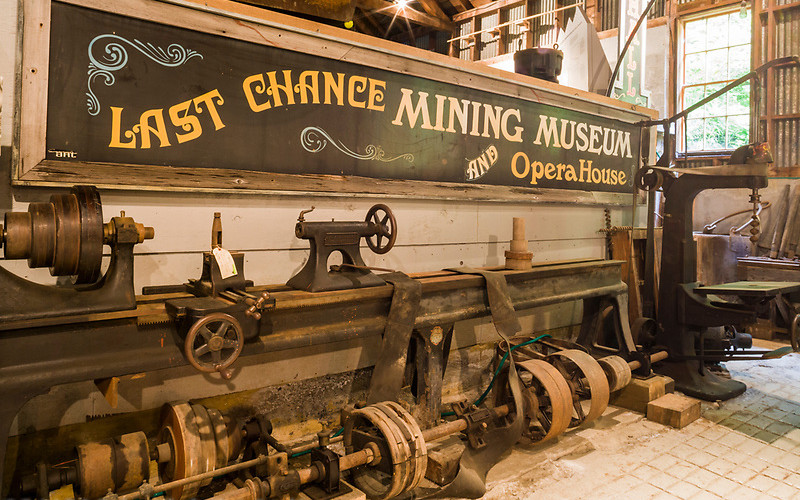
Name and Location: The Last Chance Mining Museum is located at 1001 Basin Road in Juneau, Alaska. It is situated in the former compressor building of the historic Alaska Juneau Gold Mining Company, about 1.5 miles from downtown Juneau.
History and Significance: The museum is dedicated to preserving the history of gold mining in the Juneau area, which began in the 1880s and played a significant role in the development of the city. The Alaska Juneau Gold Mining Company was one of the largest mining operations in the world at its peak, producing over 3.5 million ounces of gold before closing in 1944.
What to Expect: Visitors to the Last Chance Mining Museum can explore the historic mining buildings and equipment, including the world’s largest air compressor, which was used to power the mining operations. The museum features exhibits on the history of gold mining in Juneau, the geology of the area, and the lives of the miners and their families. Guided tours are available, and visitors can also try their hand at gold panning.
Visitor Information: The Last Chance Mining Museum is open from May through September, with hours varying throughout the season. Admission prices include access to the museum buildings and exhibits, as well as gold panning. Guided tours are available for an additional fee. The museum is partially wheelchair accessible, with ramps and accessible restrooms. Visitors should wear sturdy shoes and dress in layers, as some of the buildings are unheated. The museum gift shop offers a variety of mining-related souvenirs and books on local history.
Juneau’s mining past comes alive at this historic museum situated in the remains of the vast Alaska-Juneau Gold Mine which powered Juneau’s economy for over 90 years. A knowledgeable guide accompanies visitors 200 feet directly into the heart of the mountain via lit tunnels to see mining equipment and explain firsthand how ore was blasted, transported and processed to extract precious gold.
Marvel at the sheer scale of the operation including enormous ore crushers, air compressors, locomotive engines and more ringed by rough-hewn walls of solid rock. Touches like miners’ graffiti, jugs of cigarettes and hard hats further transport you back to early 20th century when thousands of men labored away in the vast mountainside mine complex that underlies much of Juneau’s downtown.
Shrine of St Therese
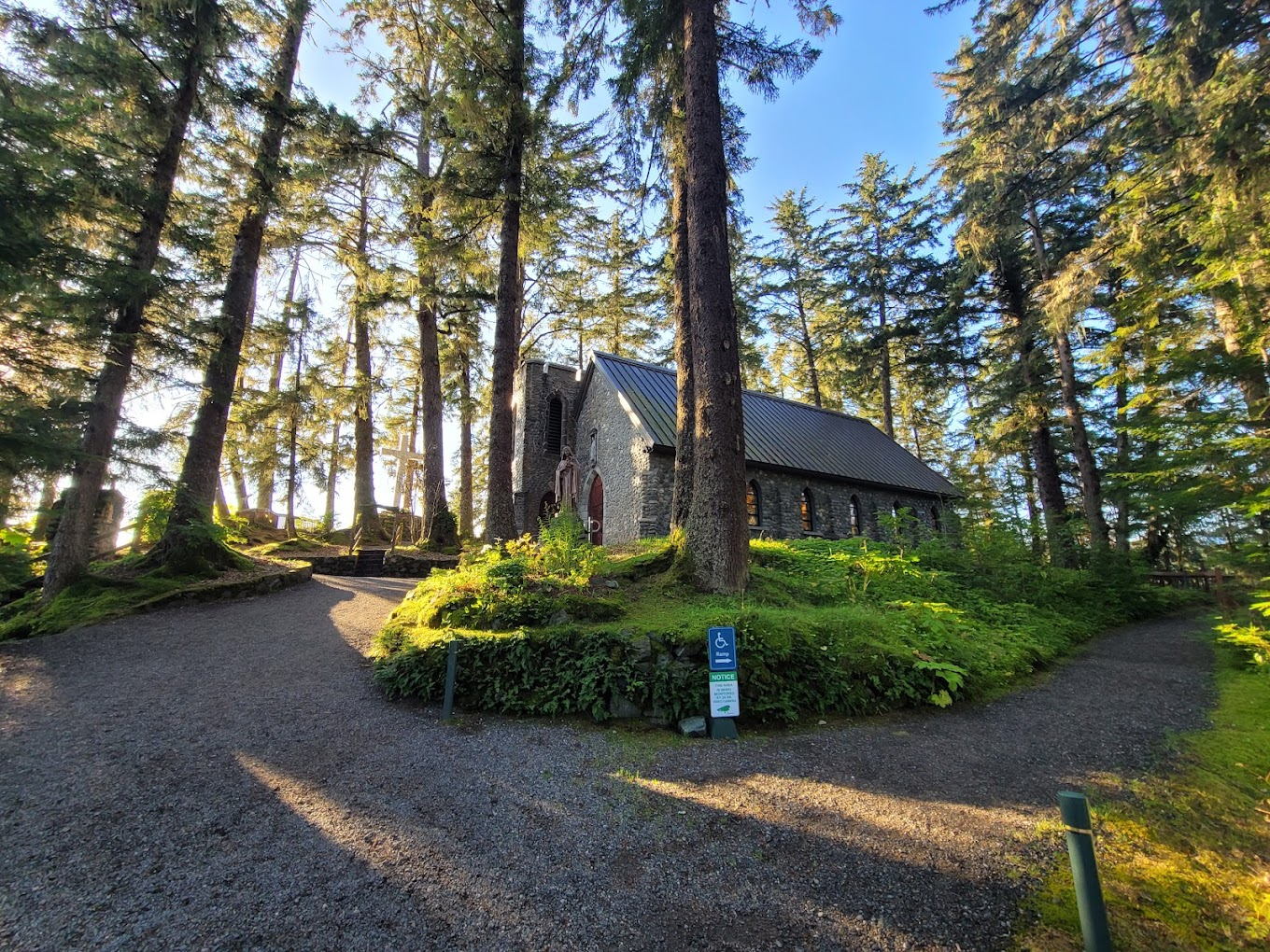
Name and Location: The Shrine of St. Therese is located at 21425 Glacier Highway, about 22 miles north of downtown Juneau, Alaska. The shrine is situated on a picturesque island connected to the mainland by a causeway, offering stunning views of Lynn Canal and the surrounding mountains.
History and Significance: The Shrine of St. Therese was established in 1932 by Bishop Joseph Crimont, who named it after St. Thérèse of Lisieux, a French Carmelite nun known for her simple spirituality. The shrine was built as a place of prayer, reflection, and retreat for Catholics in the Diocese of Juneau. It features a stone chapel, a large outdoor pavilion, and several smaller shrines and monuments scattered throughout the grounds.
What to Expect: Visitors to the Shrine of St. Therese can explore the peaceful grounds, which include a rosary trail, a columbarium, and a beach with a stunning view of the water. The stone chapel, built in 1941, features beautiful stained glass windows and a serene interior. Mass is celebrated daily in the summer months, and visitors are welcome to attend. The shrine also hosts retreats, workshops, and special events throughout the year.
Visitor Information: The Shrine of St. Therese is open year-round, with limited hours in the winter months. Admission is free, but donations are welcomed to support the upkeep of the facilities. The shrine is accessible by car, with plenty of parking available. Visitors should note that the shrine is a place of worship and dress modestly when entering the chapel. Comfortable walking shoes are recommended for exploring the grounds. The shrine gift shop offers a selection of religious items, books, and locally made crafts.
Built in honor of St Therese of Lisieux starting in 1926, Juneau’s gorgeous Catholic cathedral sits peacefully on a high green lawn with glittering views down the channel towards Douglas Island across the way. Enter the sanctuary under an arch beautifully decorated with colorful Catholic motifs and Merrill Jensen stained glass windows to stand in awe surrounded by incredibly intricate stonework.
Arches, columns, filigrees and more frame Stations of the Cross oil paintings and the sparkling altar. Out front, a somber stone grotto frames a statue of the Virgin Mary cradling Jesus’ body after his crucifixion. Beside it, breezes set five wind chimes ringing through the shrine dedicated to Philippine saint Pedro Calungsod.
Alaska State Capitol
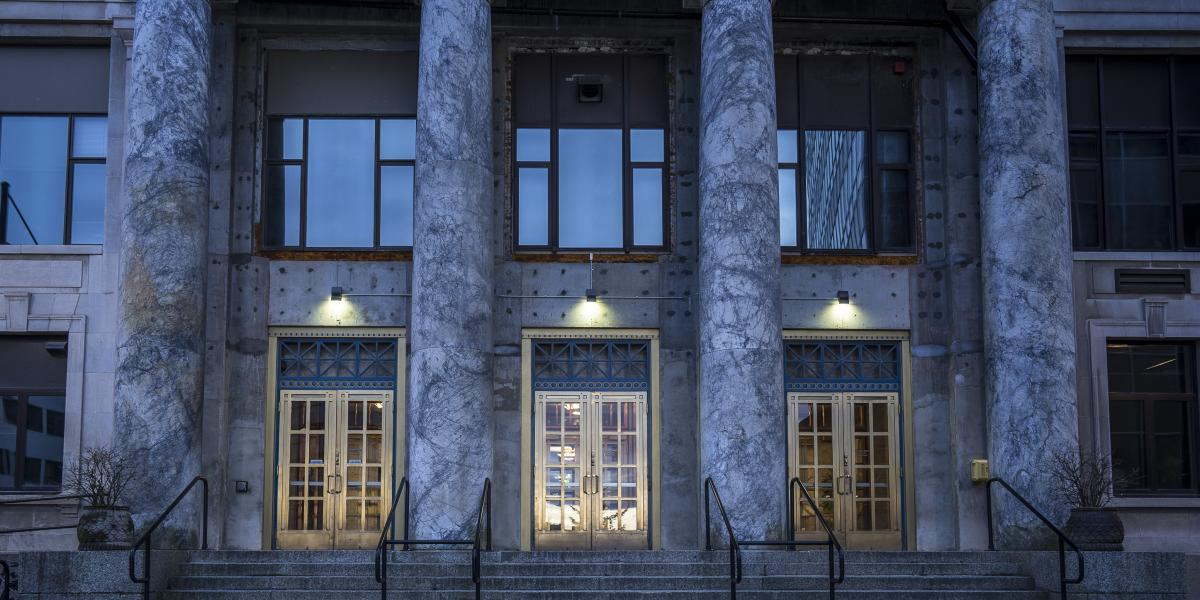
Name and Location: The Alaska State Capitol is located at 120 4th Street in downtown Juneau, Alaska. The building sits on a prominent site overlooking the Gastineau Channel and the city of Juneau.
History and Significance: The current capitol building was completed in 1931 and has served as the seat of Alaska’s state government since Alaska achieved statehood in 1959.
Alaska’s state legislature meets each winter in Juneau’s understated state capitol building rich with architectural detailing and symbolism. Free guided tours explain highlights like the singing legislative chamber doors, the legislative rostrum inlaid with Alaskan natural elements and symbolically designed light fixtures as guides share legislative processes and stories.
Don’t miss exhibits chronicling governors throughout Alaska’s history as a US territory and state and other historic events in the Capitol Lobby. Visitors are welcome to quietly sit in viewing galleries above both chambers to watch governmental debates on official session days. Surrounding Capitol Park offers additional trails and memorials commemorating influential Alaskans.
Macaulay Salmon Hatchery
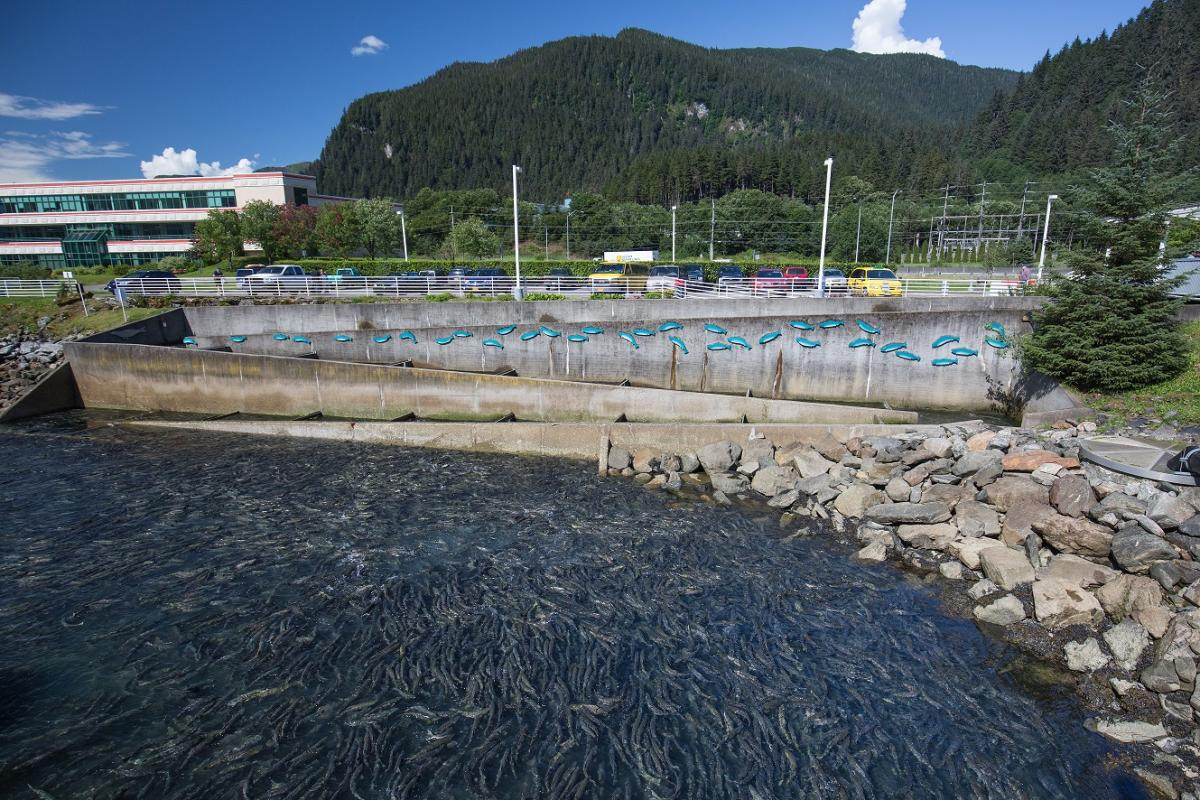
See thousands of salmon struggle heroically upstream from the ocean each summer to the Macaulay Creek Salmon Hatchery along the road to Mendenhall Glacier. From tall platforms, visitors gaze down through underwater viewing windows as the fish press themselves against the powerful current to reach their spawning grounds.
Descend to streamside trails winding through the rainforest to see the salmon’s flooded spawning grounds teeming with thrashing red fish. Inside the facility, educational exhibits chronicle the salmon’s full lifecycle from tiny hatched fry to maturity at sea to heroic homecoming to spawn. Time your visit for July or August for peak action during the annual salmon run where you may even spot a black bear catching fish along the banks. Guided tours provide extra insight.
Conclusion
From thrilling glacier treks to mystic mountaintop tram rides, lush rainforest trails to historic downtown streets steeped in gold rush ambiance, Juneau truly offers an array of world-class attractions well-worth braving the scenic journey to Alaska’s remote capital city.
Whale watching ranks for many as Juneau’s quintessential marine experience while Mendenhall Glacier’s frozen face encapsulates the chilling beauty of Alaska’s ice sculpted landscapes. Numerous museums and gold rush era relics commemorate the region’s colorful mining history and resilient native cultures while lush botanical gardens and salmon hatcheries showcase Alaska’s diverse scenic natural splendor.
Soaring views from Mt Roberts and spectacular Russian onion domes pay homage to Juneau’s multicultural heritage. But it’s the sheer wealth of wilderness adventure set against a backdrop of sprawling glaciers, fir-clad peaks and island-speckled waters right at its backdoor that make Juneau shine as one of Alaska’s top destinations.

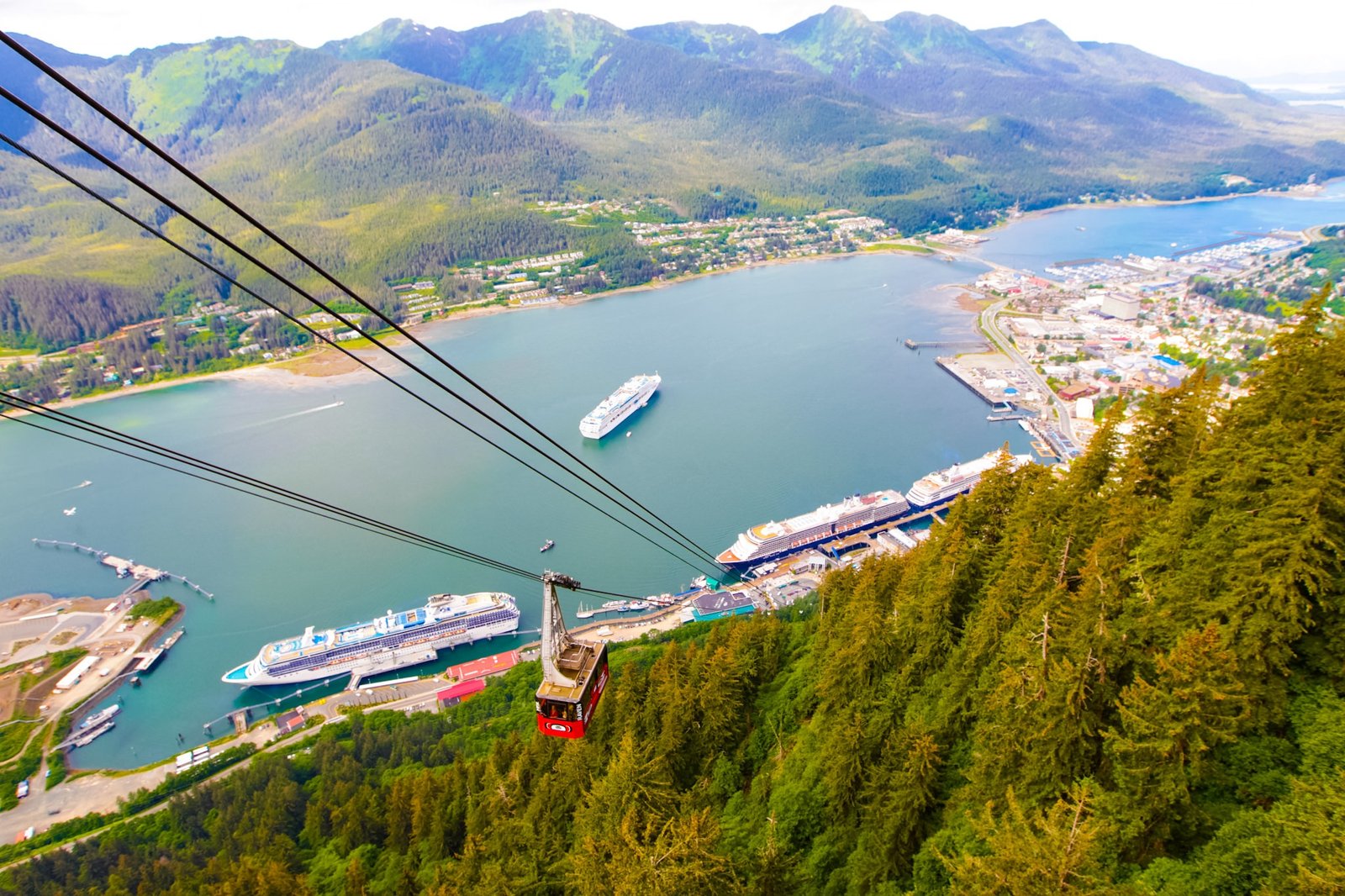
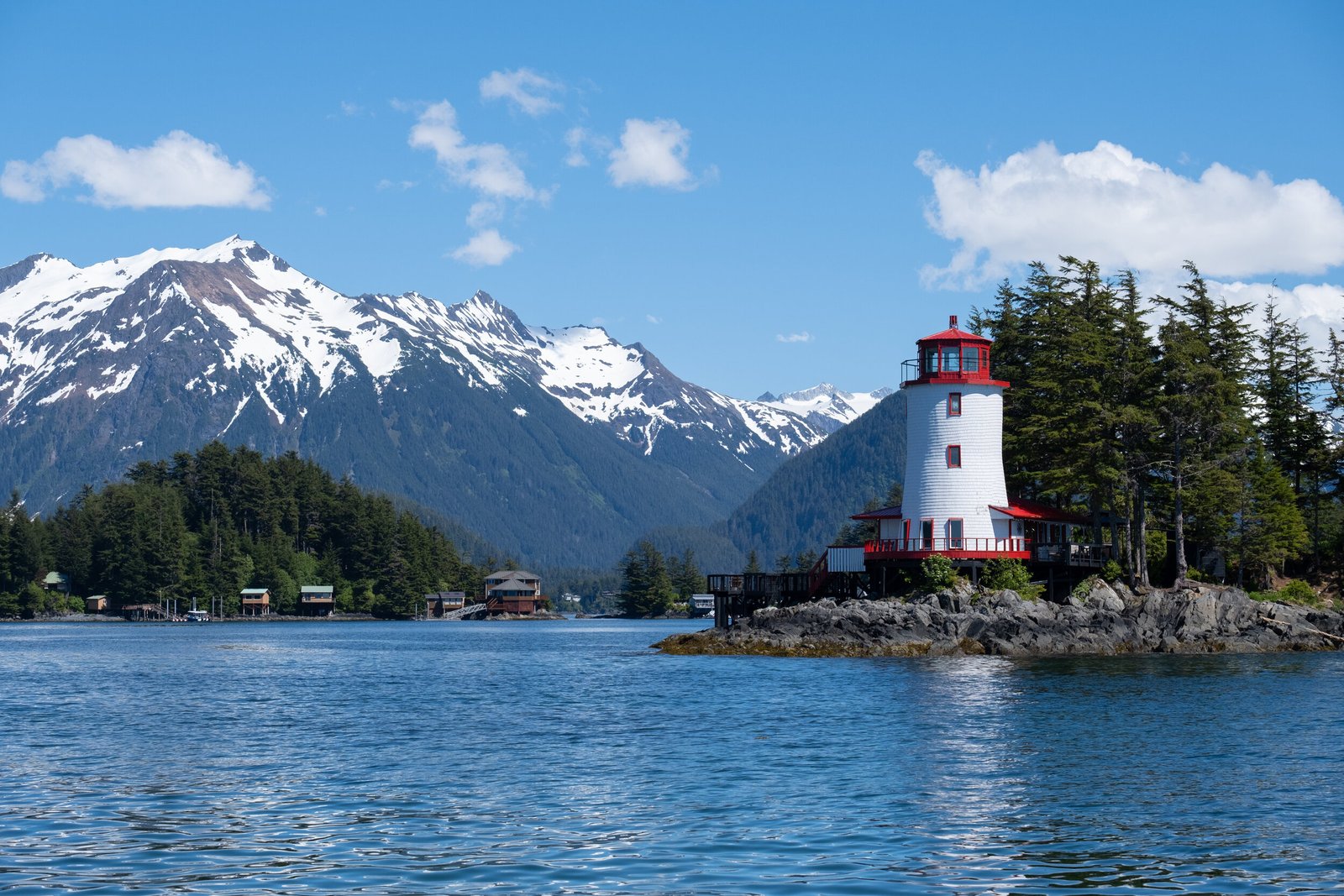

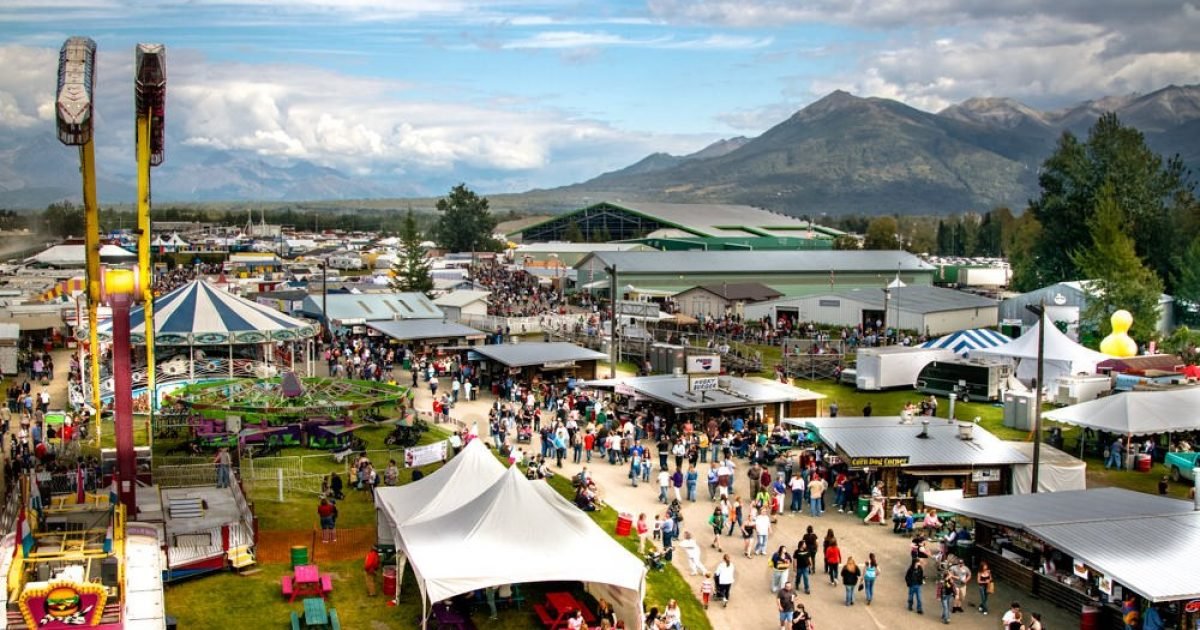
Join the Conversation